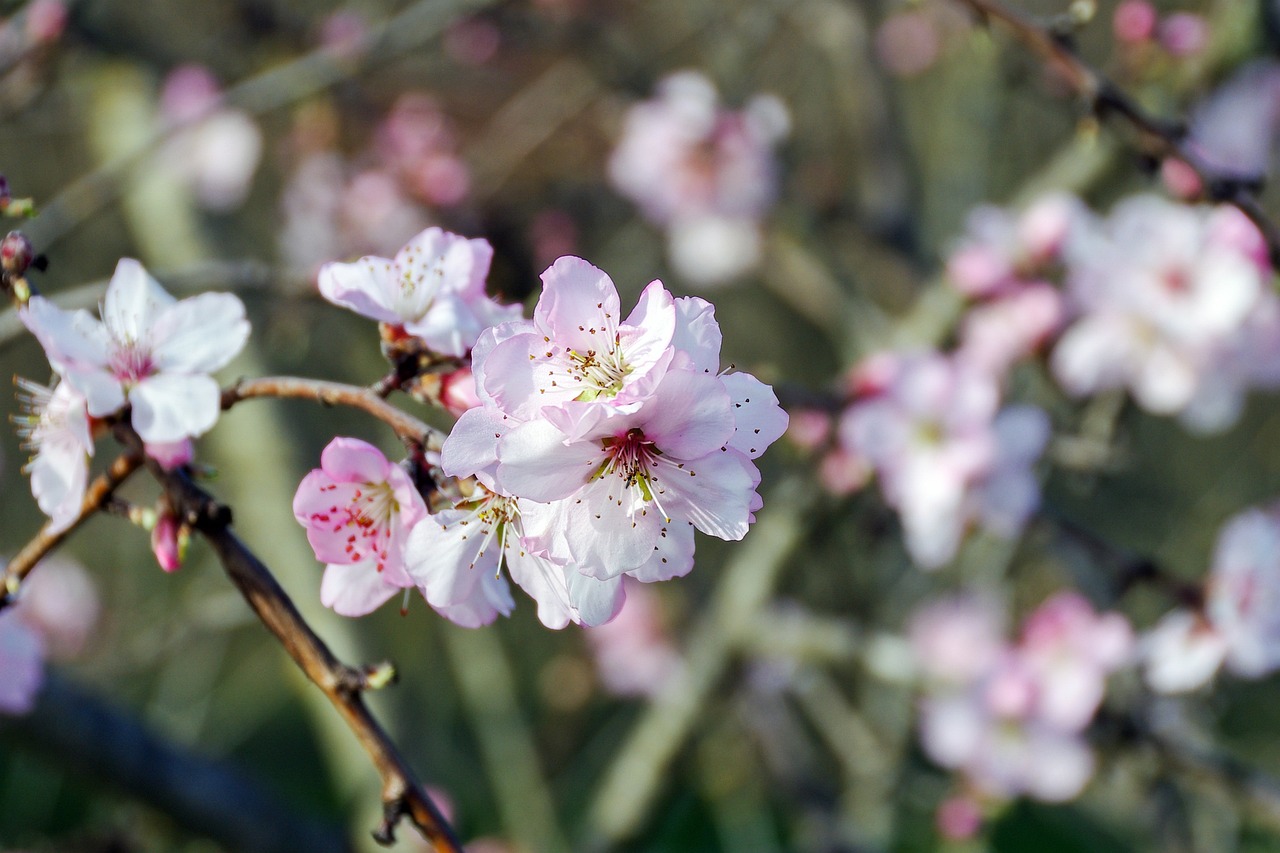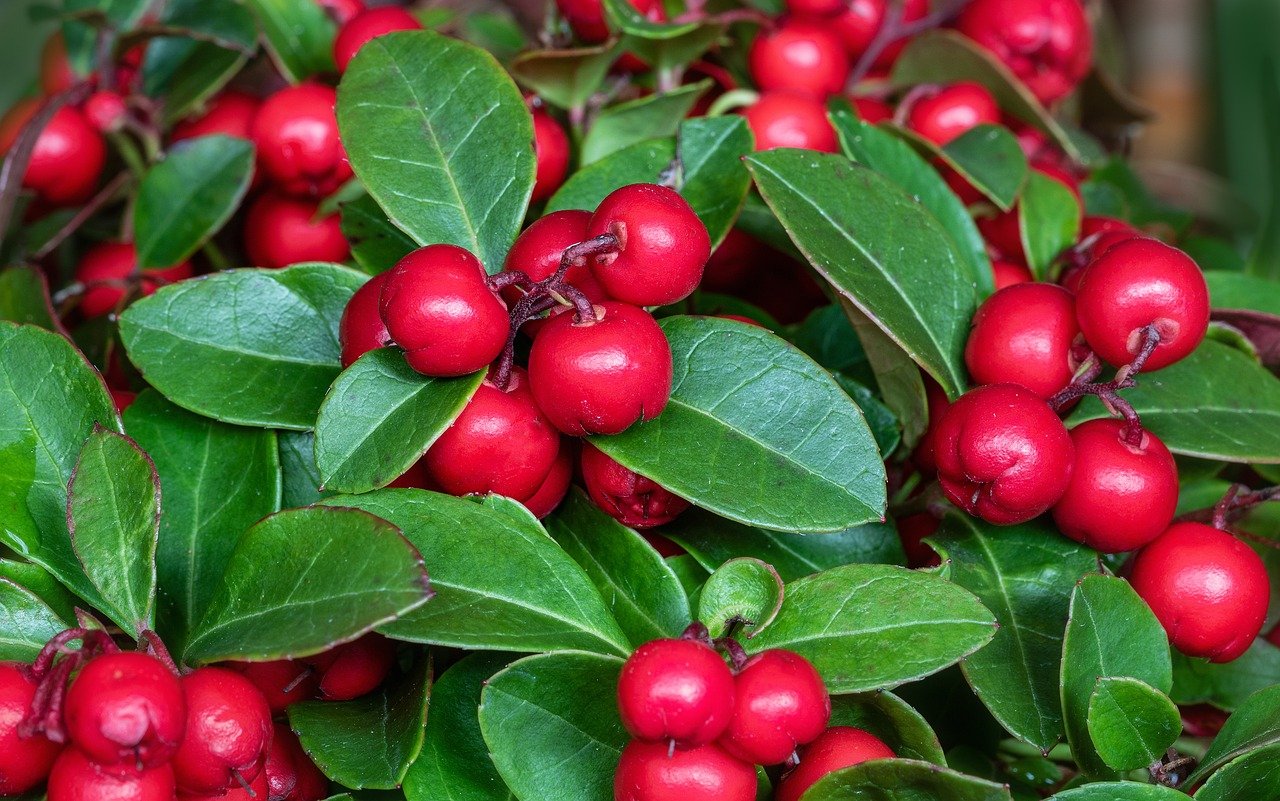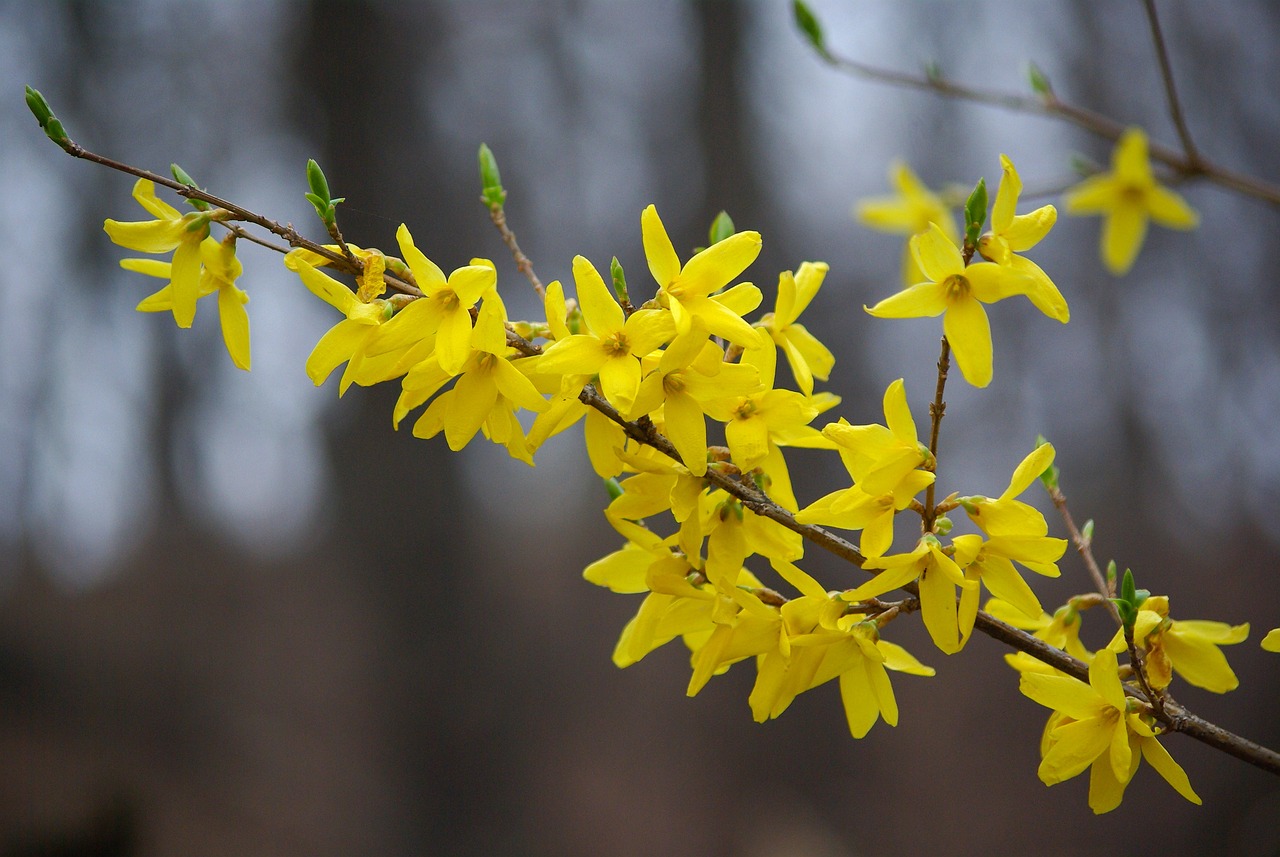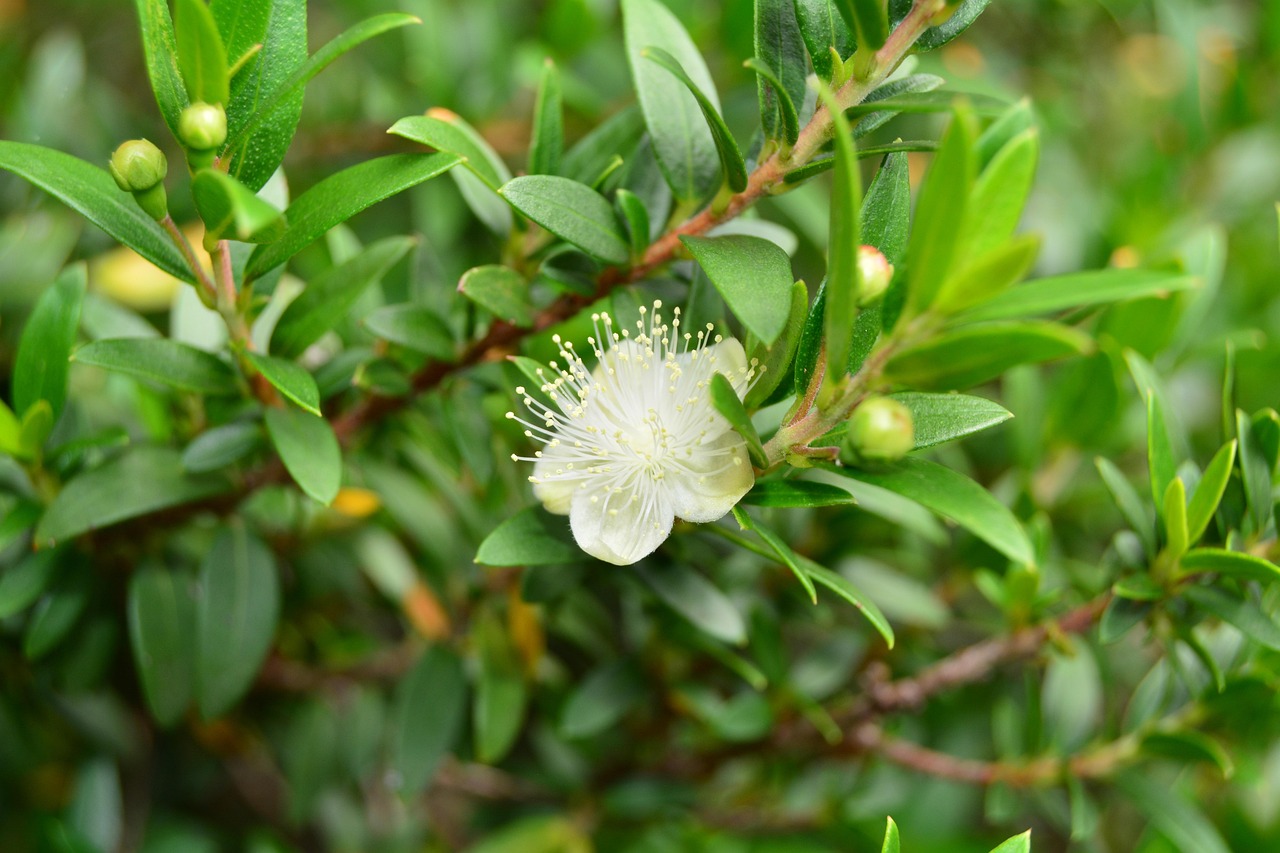Philadelphus coronarius | Pure White Flowers Perfuming European Gardens
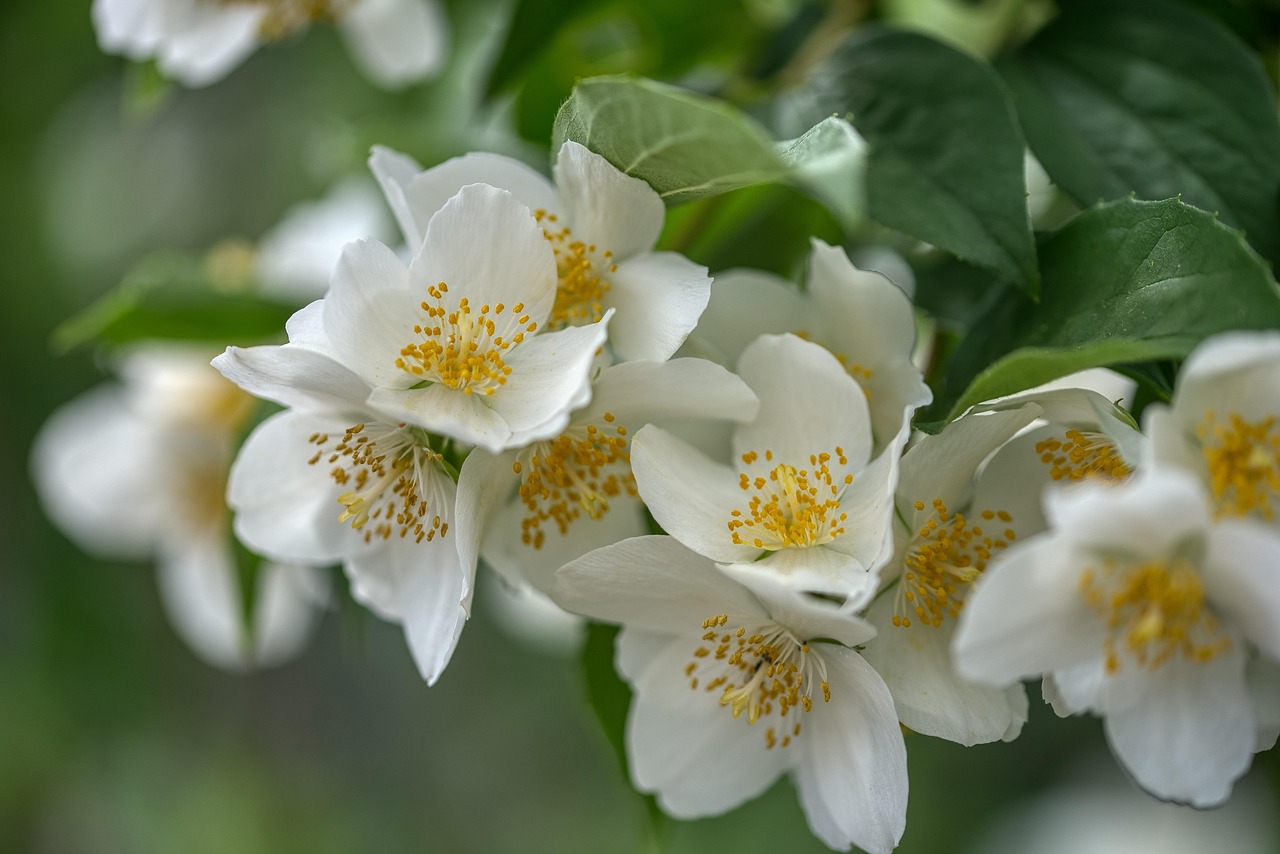
Philadelphus coronarius, commonly known as Mock Orange, is a deciduous shrub that offers sweet fragrance and pure white blossoms in early summer. Because of its beautiful appearance and scent, I widely use it in gardens and hedges as an ornamental shrub.
In this article, I will explain the basic information, cultural and historical background, and cultivation tips of Philadelphus coronarius.
Basic Information
- Scientific name: Philadelphus coronarius
- Family: Hydrangeaceae
- Origin: Southern Europe, Western Asia
- Appearance: A shrub that grows to about 1.5–3 meters in height, with spreading branches. Its white flowers are simple in shape, about 2–4 cm in diameter, and bloom abundantly in early summer. The fragrance, similar to jasmine, fills the entire garden with a pleasant aroma.
- Blooming season: May–June
Cultural Characteristics Around the World
Philadelphus coronarius has long been cherished in European gardens.
In France and the United Kingdom, it is often planted as a garden shrub or hedge, symbolizing a presence that fills the entire garden with its sweet fragrance.
In traditional French garden design, it is frequently combined with roses and lavender, creating a rich and elegant landscape.
In Eastern Europe, there is a custom of picking the fragrant flowers for bouquets and wreaths. The blossoms are sometimes regarded as a symbol of purity and remembrance, and are also used for weddings and home decorations.
Historical Background
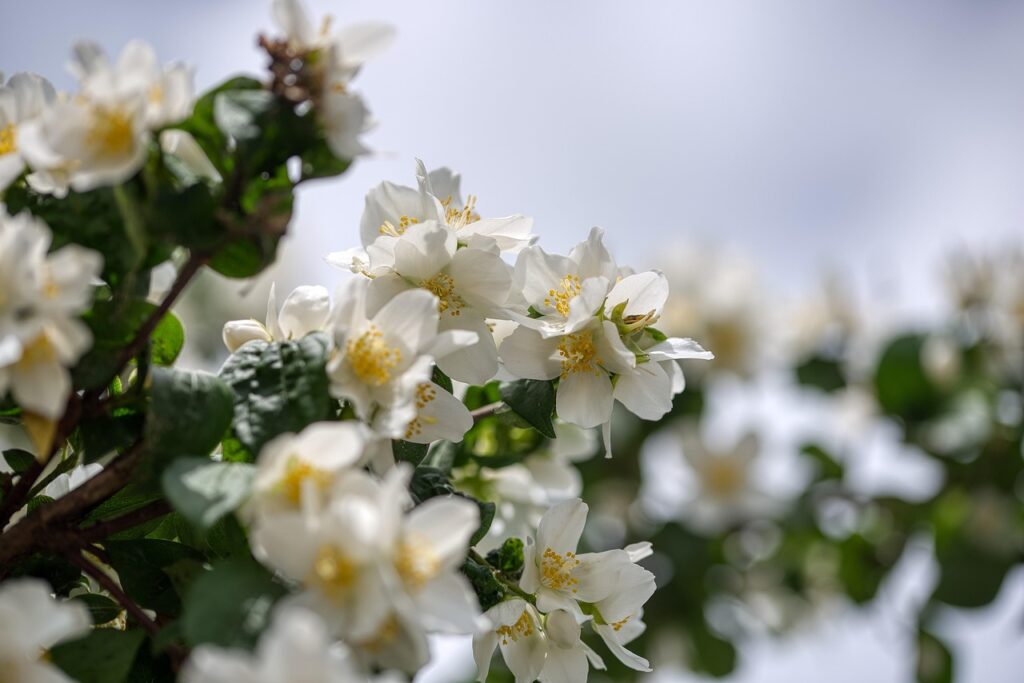
Philadelphus coronarius spread across Europe in the 16th century and became highly popular in palace and aristocratic gardens.
The scientific name Philadelphus is derived from Ptolemy II Philadelphus of Egypt, named after the way its fragrance seems to embrace beloved people.
Its appearance in garden culture was influenced by the fashion of creating “fragrance gardens,” which gathered strongly scented plants.
In the 18th century, British garden designers introduced the plant into their designs, and many cultivars were developed.
Later, it crossed from Europe to North America, where it also became widely cultivated.
Gardening Advice
Philadelphus coronarius is hardy and easy to grow, making it a long-lasting pleasure in gardens and parks. Here are some key points for cultivation:
Sunlight
Thrives from full sun to partial shade, but requires sufficient sunlight to produce abundant flowers.
Watering
Water young plants moderately when the soil dries. Mature shrubs are drought-tolerant, but water should be given during prolonged dry periods.
Soil
Prefers well-drained soil. It adapts to a wide range from sandy to clay soils, but grows best in soil rich in organic matter.
Fertilizer
Apply slow-release fertilizer in spring for better growth. Avoid over-fertilizing and reduce feeding after flowering.
Pruning
Prune old branches after flowering to improve the following year’s blooms. Keep the plant airy by thinning crowded branches.
Conclusion
Philadelphus coronarius is a deciduous shrub that provides sweet fragrance and white flowers in early summer. It is hardy, easy to grow, and adapts from full sun to partial shade.
With a history dating back to 16th-century Europe, it has been cherished as an essential shrub in garden culture.
By planting it in a garden or park, I can add a fragrant accent to early summer landscapes.


